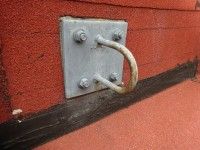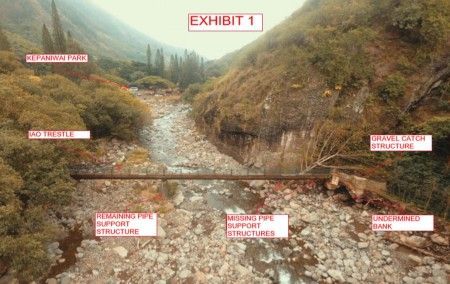Balconies: The Warning Signs of Structural Issues (Part 1 – Concrete)
Balconies are a welcome asset in most commercial office buildings and condominium communities. However, it’s important that balconies be inspected regularly (usually once a year) to ensure that they remain structurally sound.
Depending upon the materials used in your balcony (concrete, metal, wood), there are definite warning signs indicating that erosion, water damage and other issues are present and could be impacting the integrity of the structure. In this three-part series, we’ll show you what to look for based on the materials used.
If any of the indications noted here are present in your building’s balconies, you should bring in a structural engineering professional as soon as possible to investigate. The engineer will be able recommend appropriate steps needed to repair the damage and mitigate against further deterioration. Once repairs are made, they can certify that the balcony is once again sound and able to bear the load of resident activity for many years to come.
Concrete Balconies – Problem Indicators
- Efflorescence.
Salt and calcium deposits leach out of concrete and masonry when water is introduced into cracks. While these cracks may not be visible to the naked eye, the white, powdery substance that appears (efflorescence) is a clear indicator of water intrusion undermining the integrity of the concrete.
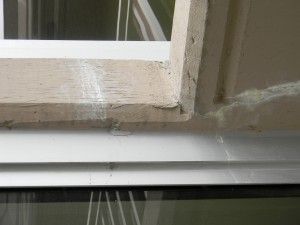
Efflorescence and cracking along underside of balcony. - Cracking.
By the time cracks in concrete become visible to the naked eye, serious structural damage is present and immediate steps should be taken to address the deterioration. Because balconies typically sit above other balconies in structures with three or more floors, it’s a safe bet that the structures above and below are also being impacted as water runs through the cracks and flows downward.
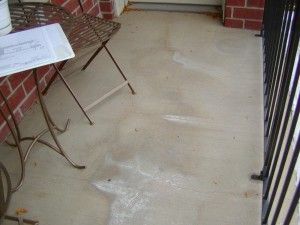
Cracking in concrete is an indication of serious structural issues. - Delamination.
Caused by impact and stress, delamination is when the top layer of concrete pulls away from the material below. This can show up in small patch-like sections or larger sheets. You’ll want to catch and address these deteriorations as soon as they occur to avoid the potential for more widespread damage. If you see large areas of delamination, the structural integrity of the entire slab is at risk.

An example of concrete delamination. - Water Staining.
Water stains on your concrete balcony mean that water is dropping directly onto the slab. This usually means a water leak or run-off from the balcony above. If not addressed, the continuous flow of water will begin to work away at the concrete.

Water staining and efflorescence along the underside of balcony. - Spalling.
When small, pebble-like pieces appear in the concrete, it’s called spalling. Spalling shows up when the top layer of concrete erodes to show the aggregate below. This can occur due to stress or extreme temperatures and is one of the more serious issues that should be addressed as quickly as possible.
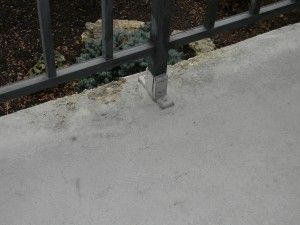
Evidence of concrete spalling.
K2N Crest specializes in creative problem solving in the practices of architectural design, structural engineering, architectural engineering, interior renovation, forensic engineering and roof consulting. Building owners and managers throughout Illinois and Hawaii look to K2N for their architectural, structural and roof evaluation needs. www.k2n.com
